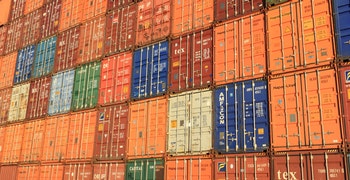SD-WAN providers: Are you prepared for potential telecom taxation?
Have you been considering SD-WAN (software-defined wide area network) as an option for expanding your portfolio of services? If so, you’re not alone. The demand for SD-WAN is sky-high right now and businesses of all sizes are fast to adopt it as an efficient, cost-effective way to connect distributed locations.
Before you get too far along with SD-WAN offerings, it's important to pause and consider the potential impacts of telecom taxation.
Of all the latest communications technology innovations, SD-WAN rises to the top of the list for fast-growing markets likely to capture the attention of taxing jurisdictions and regulatory bodies.
Here's a quick look at what tax teams should be aware of today, and what telecom taxation might look like for SD-WAN in the future.
Why SD-WAN is booming
SD-WAN is a specific type of software-defined networking (SDN) technology used to connect enterprise networks via WAN connections. This type of networking technology makes it easy to connect distributed offices, data centers, and customers across large geographic distances — something that's increasingly important with the growth of distributed workforces, mobile apps, cloud service adoption, and the like.
In other words, SD-WAN is a hugely attractive business-to-business offering for companies of all sizes. Worldwide, managed SD-WAN services are expected to grow to $10 billion by 2022 as organizations look to service providers to replace traditional managed WAN services.
It's no surprise that so many providers are exploring ways to leverage SD-WAN technology as a competitive differentiator. But one thing many of these vendors may not be thinking about is the possibility of future telecom taxation implications.
Any time a communications technology reaches this magnitude of mass adoption, it's sure to be high on the radar of taxing authorities.
Telecom taxation implications for SD-WAN providers
So far, most SD-WAN vendors have largely avoided telecom taxation and regulatory fees. But this may not always remain the case. For all its promise as a profitable investment, there's still the potential for future audit liabilities. While the method of delivery has changed, SD-WAN delivers a service function very similar to traditional WAN networks, which are highly taxed.
To understand just how quickly things could change from a telecom tax perspective, it helps to recall what happened with VoIP services not long ago.
In the early years of Voice over Internet Protocol, providers worried very little about telecom tax and regulatory fees. The convenient assumption often was that it constituted a non-taxable information service. Then states began to examine and redefine how they approached VoIP from a telecom taxation perspective, and new rules and rates began to apply.
Fast-forward two decades, and interconnected VoIP services are frequently subjected to most of the same federal regulatory fees and state telecom taxes as traditional services.
Could a similar path soon be paved for SD-WAN? It's likely. Anytime an innovative technology disrupts the status quo, it's sure to capture the attention of telecom tax authorities and regulatory bodies.
While there's no telling how much longer telecom tax implications for SD-WAN vendors will remain minimal, it's safe to assume that changes are coming.
Preparing for SD-WAN telecom taxation
The more prepared you are today, the more likely you'll experience success when these changes start to take shape. That means keeping an eye out for new and different ways taxing authorities might view SD-WAN services as telecom taxable.
- Is there a chance that one element of a bundle including SD-WAN could render the entire package subject to telecom taxes in certain states?
- Could the language your company uses to present SD-WAN in marketing materials signal telecom-style usage to an auditor?
These questions and others like them are important ones to ask — not just in a generalized way, but across every state where your business has nexus. Because each jurisdiction takes its own approach to telecom taxation, rules and rates can vary drastically from one to another.
In summary
As the demand for SD-WAN continues to climb, companies are wise to pursue it in the most innovative ways possible. However, it would be unfortunate to prioritize such a promising opportunity without simultaneously preparing for telecom tax impacts. Taxing jurisdictions and regulatory bodies are likely to begin redefining how existing laws apply to software-defined wide area networks. And when they do, it will open the floodgates to an outpouring of highly complex regulations, rates, and requirements.
Preparing now by staying up to date on new rulings and conversations across thousands of taxing jurisdictions is your best bet. Because when you know what's coming, you'll be ready to calculate the correct telecom taxes and fees right away. And that's a competitive edge that's tough to beat.
The telecom tax specialists at Avalara for Communications are continually tracking changes and updates across thousands of taxing jurisdictions. Stay in the know with the latest telecom taxation information.

The Avalara Tax Changes midyear update is here
Trusted by professionals, this valuable resource simplifies complex topics with clarity and insight.
Stay up to date
Sign up for our free newsletter and stay up to date with the latest tax news.













